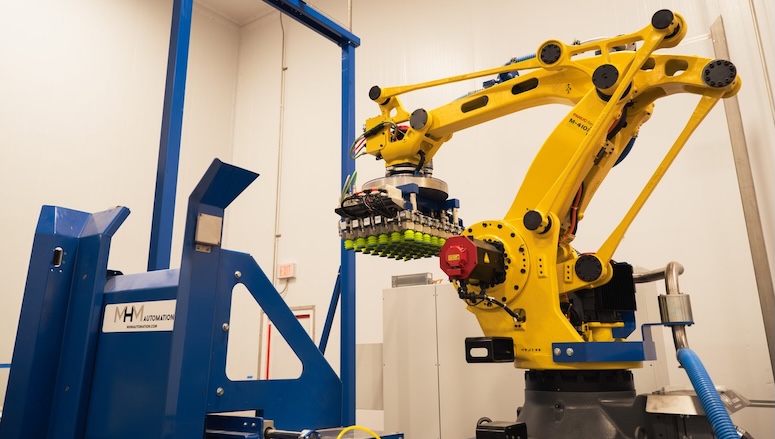— 8 min read
How to Prevent Mechanics Liens on Any Construction Project



Last Updated Jun 16, 2024

Ethan Lobo
Document Control Manager
Ethan is a Document Control Manager for Procore. A New Jersey native, Ethan worked as a construction project manager before moving to New Orleans in 2017, where he is a Louisiana Notary Public. An alumnus of the Levelset (a Procore company) Scout Research team, he now uses his sleuthing skills and construction lien expertise to find and analyze construction and property data to help develop new tools and insights.

Matt King
Author
Matt King is a professional writer whose work has appeared in The Village Voice and The American Lawyer, as well as on PBS FRONTLINE. He holds an M.S. in journalism from Columbia University, and a J.D. from Northeastern University's School of Law. In his office hangs a medal from the Brooklyn Pinball Championship (on the back it says participant).

Jonny Finity
Senior Content Manager
28 articles
Jonny Finity creates and manages educational content at Procore. In past roles, he worked for residential developers in Virginia and a commercial general contractor in Bar Harbor, Maine. Jonny holds a BBA in Financial Economics from James Madison University. He lives in New Orleans.
Last Updated Jun 16, 2024

In construction, when a contractor or supplier is unpaid, they can typically file a mechanics lien on the property. It’s a powerful tool to balance the power dynamic on a project. But no one likes mechanics liens — owners don’t want a lien filed on their property, and contractors would rather get paid on time and in full. Filing a lien is a hassle.
Fortunately, mechanics liens are almost entirely preventable — there are a number of steps that owners and contractors can take to avoid liens and ensure payments make it into the hands that earned it.
In this article, we will explore how liens happen, the risks surrounding liens and the options for preventing a mechanics lien on a construction project.
Table of contents
Mechanics Lien Basics
A lien is a formal claim on property for unpaid debt — common types include tax liens and mortgage liens. In construction, contractors and suppliers that don’t receive payment for services or materials provided for permanent improvements can file a mechanics lien on the property. A valid lien clouds the property title, making it difficult to sell or refinance. It can even show up on the debtor’s credit report.
Essentially, this means that a contractor, supplier or other company that contributes to a building project but isn’t paid for their work can actually secure an interest in the property or built structure — effectively gaining a stake in the property. In extreme cases, if the contractor remains unpaid, they can initiate litigation and seek to force the sale of the property to satisfy the debt.
Lien & Notice Deadlines
Contractors seeking to file a mechanics lien are often subject to stringent requirements and deadlines. Every state has its own rules and deadlines for providing notice and filing a lien – missing a deadline can cause a claimant to lose their right to file a lien for non-payment. Broadly speaking, construction companies — particularly subcontractors — generally need to provide preliminary notice to the owner and general contractor within a certain period after starting the project.
Many contractors and suppliers will send notice before starting work on every project — whether or not it is required — to ensure they always retain lien rights for the full contract amount.
The Biggest Lien Risk for Owners
Owners generally want to avoid liens on their property. A lien can force the property owner to make double payment and, in severe cases, lose their property if the lien holder forecloses.
Of course, most property owners and developers work hard to ensure that everyone who contributes to a construction project is paid for their work or materials according to the contract. However, they don’t always have full control of the payment process. They typically pay the general contractor, who distributes payments down the chain to their subcontractors. Each subcontractor is responsible for keeping funds moving down to their subcontractors and suppliers.
The lack of visibility into the financial waterfall presents the biggest risk for property owners — as well as subcontractors and material suppliers who are several layers removed from the owner. Every time money changes hands between layers on the payment chain, there is a chance that it won’t make it to the companies down the line.
Because anyone who contributes to the project can file a lien if they are unpaid, the smallest subcontractor on a job can make a claim on the property. The amount of the payment is irrelevant — a contractor can theoretically file a lien for $1. (Of course, there are fees associated with filing a lien, so contractors typically have a minimum threshold for making a lien claim on any particular project.)
In some cases, the owner makes payment in full to the general contractor, but a subcontractor doesn’t receive their payment. The owner may have to make an additional payment to the unpaid sub directly to avoid a lien, effectively paying twice for the same work.
Lien waivers help mitigate this risk — but these tools are only effective against liens from those who submit them. Especially on large projects, owners are frequently unaware of every contractor or supplier who contributes to the job. A valid lien may be filed by a contractor they have never even heard of.
Stay updated on what’s happening in construction.
Subscribe to Blueprint, Procore’s free construction newsletter, to get content from industry experts delivered straight to your inbox.

6 Ways to Prevent Liens
How do owners and developers prevent liens? The short answer is communication. But it goes beyond that: Below are a few ways to minimize the risk of a mechanics lien against a property.
The simplest way to avoid liens is to ensure everyone on the project is paid for their work or materials. Simply paying the general contractor isn’t enough, since any party to the project may be able to file a lien if they are unpaid. However, this is easier said than done, and liens are often filed despite the owner’s best efforts to make timely payment.
1. Prequalify contractors.
Owners should include a review of the general contractor’s payment history during the bidding process. Similarly, GCs should put their own subcontractors through a similar prequalification process.
Inquire with owners on past projects about the contractor’s reliability and payment practices. Make calls to some prominent specialty contractors in the area — even if they haven’t worked for the GC directly, they are likely aware of their payment reputation. Have mechanics liens or litigation been filed in connection with previous projects overseen by the general contractor? Does the general contractor have a reputation for prompt and full payment?
2. Use lien waivers correctly.
Owners should stipulate that the general contractor collect conditional lien waivers from all parties on the project along with payment applications, and retain copies for their records. After payment is made, owners may require everyone to provide an unconditional waiver in the amount of the payment. This waiver relinquishes a contractor’s lien rights in the amount specified on the document, protecting the owner from frivolous liens.
Those requested to sign a waiver, however, should not only read the document thoroughly, but also familiarize themselves with the different types of waivers, to ensure they understand what it is they are signing. Waivers received can be compared to preliminary notices to ensure all parties are in compliance.
3. Document all contractors and suppliers on the project.
To avoid surprises owners can require their general contractor to provide a detailed list of every subcontractor and supplier, all the way down to the bottom of the chain. The GC can provide a contact list and/or collect preliminary notices from all parties below them. These notices are important for tracking all parties who supply time and/or materials on a job and can streamline accounts payable. This also makes it easier for the owner to verify receipt of waivers from all parties before issuing payment to the GC.
4. Require a payment bond.
Property owners can further enhance lien protection by requiring their general contractor to secure a payment bond. The bond allows subcontractors or suppliers to make claims against the bond rather than the property itself.
However, the cost of payment bonds on smaller private projects may be impractical. Owners can still obtain some protection for their property by requiring the general contractor to purchase lien release bonds for claims filed by subcontractors or suppliers. These bonds take the place of the property, transferring the lien claim to the bond itself.
This option may be unpopular with GCs, though, as the value of a lien release bond generally needs to be at least 1.5x the value of the lien, making it costly to obtain.
5. File a notice of completion.
In states where applicable, filing a notice of completion provides extra protection to property owners. This notice, filed with the county, officially documents the project’s completion. In some places, filing a notice of completion can shorten the deadline to file mechanics liens, significantly lowering the risk of such claims.
6. Issue joint checks.
A joint check is made out to two parties, both of whom need to endorse it in order for it to be deposited or cashed. Joint checks can be used in any industry, but are most common in construction. Issuing a joint check can be an effective way to ensure that payments are being made to subcontractors or suppliers that are at risk of going unpaid. GCs commonly enter into a joint check agreement with a subcontractor and the sub’s material supplier.
How Title Insurance Protects Against Past Liens
Title insurance is a vital form of protection against claim disputes to a property’s title, including those of mechanics lien claims. This specialized insurance policy acts as a guarantee that, should any party come forward with a lien or other type of claim to a property, the owner of that property is indemnified – meaning, the insurance company assumes responsibility for any legal fees or judgements that arise out of claims against the property title.
Title insurance is typically purchased when buying property, and is almost always required by lenders who are financing the sale. This type of insurance protects all parties involved, should a claim dispute arise.
It is, however, important to note that title insurance is retroactive. Coverage extends only to claims predating the writing of the title insurance policy — it doesn’t prevent future mechanics liens.
Mechanics liens are (almost entirely) preventable.
Of course, the most fundamental step to avoid the filing of mechanics liens against an owner’s property is to pay on time and in full. Prompt and complete payment (with proof thereof) eliminates any grounds for subcontractors and suppliers to file for a mechanics lien.
Mechanics liens are, in most cases, preventable. With careful selection of contractors and projects, clear and open lines of communication, thorough documentation, and prompt and full payment, the risk of a lien being filed on a project becomes minimal.
Was this article helpful?
Thank you for your submission.
78%
22%
You voted that this article was . Was this a mistake? If so, change your vote
Scroll less, learn more about construction.
Subscribe to The Blueprint, Procore’s construction newsletter, to get content from industry experts delivered straight to your inbox.
By clicking this button, you agree to our Privacy Notice and Terms of Service.
Thank you!
You’re signed up to receive The Blueprint newsletter from Procore. You can unsubscribe at any time.
Categories:
Written by

Ethan Lobo
Document Control Manager | Procore Technologies
Ethan is a Document Control Manager for Procore. A New Jersey native, Ethan worked as a construction project manager before moving to New Orleans in 2017, where he is a Louisiana Notary Public. An alumnus of the Levelset (a Procore company) Scout Research team, he now uses his sleuthing skills and construction lien expertise to find and analyze construction and property data to help develop new tools and insights.
View profile
Matt King
Author
Matt King is a professional writer whose work has appeared in The Village Voice and The American Lawyer, as well as on PBS FRONTLINE. He holds an M.S. in journalism from Columbia University, and a J.D. from Northeastern University's School of Law. In his office hangs a medal from the Brooklyn Pinball Championship (on the back it says participant).
View profile
Jonny Finity
Senior Content Manager | Procore
28 articles
Jonny Finity creates and manages educational content at Procore. In past roles, he worked for residential developers in Virginia and a commercial general contractor in Bar Harbor, Maine. Jonny holds a BBA in Financial Economics from James Madison University. He lives in New Orleans.
View profileExplore more helpful resources

Successfully Navigating Construction Lien Waivers
Getting paid can be one of the greatest challenges in construction and has often been the detriment of construction projects. To combat this challenge, issuing lien waivers has become standard...

Construction Liens Explained: How Unpaid Contractors Recover Payment
In construction, there are many forms of recourse available to contractors and suppliers who haven’t been paid. First and arguably foremost amongst them is the construction lien. Construction liens are...

Automation in Construction: Transforming the Future of Building
Technological advancements empower the construction industry to tackle complex projects and drive the global demand for sustainable, feature-rich structures technology makes possible. From design to closeout, construction automation is enabling...

Bid Management Software: Key Features & How to Choose the Right Fit
Bidding on construction projects can be a complex process. Sourcing appropriate bids and requests for proposals, analyzing bid documents, making sure estimates, preliminary schedules, and other mandatory requirements are met...
Free Tools
Calculators
Use our calculators to estimate the cost of construction materials for your next project.
Templates
Find a template to help you with your construction project tasks.
Material Price Tracker
Get the latest U.S. retail prices and view historical trends for common building materials.
Glossary
Explore key terms and phrases used in the industry.
